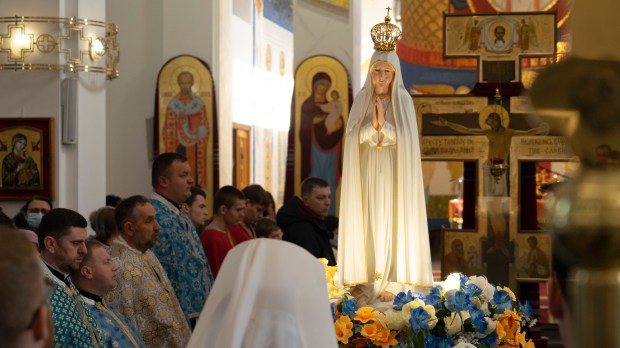A statue of Our Lady of Fatima arrived in Lviv, Ukraine, March 16, where it will stay for a month.
The replica statue of Our Lady left Portugal on March 14, and stopped for a time in Krakow, Poland, before heading to Ukraine.
The statue was welcomed by the local Greek Catholic Archbishop Ihor Vozniak, who proposed the initiative of the visit after the Russian invasion on February 24.
The Director of the Department for Liturgy of the Shrine, Father Joaquim Ganhão, invited the faithful to continue praying for the many innocent victims of the war. “War is not to be answered with war, evil is not to be answered with evil, hatred is not to be answered with hatred,” he said. “We must open our doors and recognize that the other is not our enemy, the other is not our rival, but is our brother, with whom we must build history, build peace, and it is a demanding job.”

The statue
The original statue of Our Lady of Fatima was sculpted by José Ferreira Tedin, reflecting the precise instructions of Sister Lúcia, one of the three children who witnessed the Marian apparitions in Fátima in 1917. After the attempted assassination of Pope St John Paul II in 1981, one of the bullets that struck the Pope was encased in the crown of the Virgin.
Copies of the statue were made to meet ever-growing requests from all over the world for a visit from the statue. There are a total of 13 copies of the Pilgrim Virgin of Fatima.
The idea of a pilgrimage of the image of the Virgin Mary developed right after World War II, when a parish priest in Berlin proposed that the statue of Our Lady of Fatima visit all European capitals and cities which are diocesan headquarters.
After more than 50 years of pilgrimage, during which the statue visited 64 countries on all continents (some of them several times), the Shrine authorities decided that the statue should leave Fatima less often, solely in exceptional cases. The pilgrim statutes now allow for the spiritual festivities to surround a visit of the statue.


